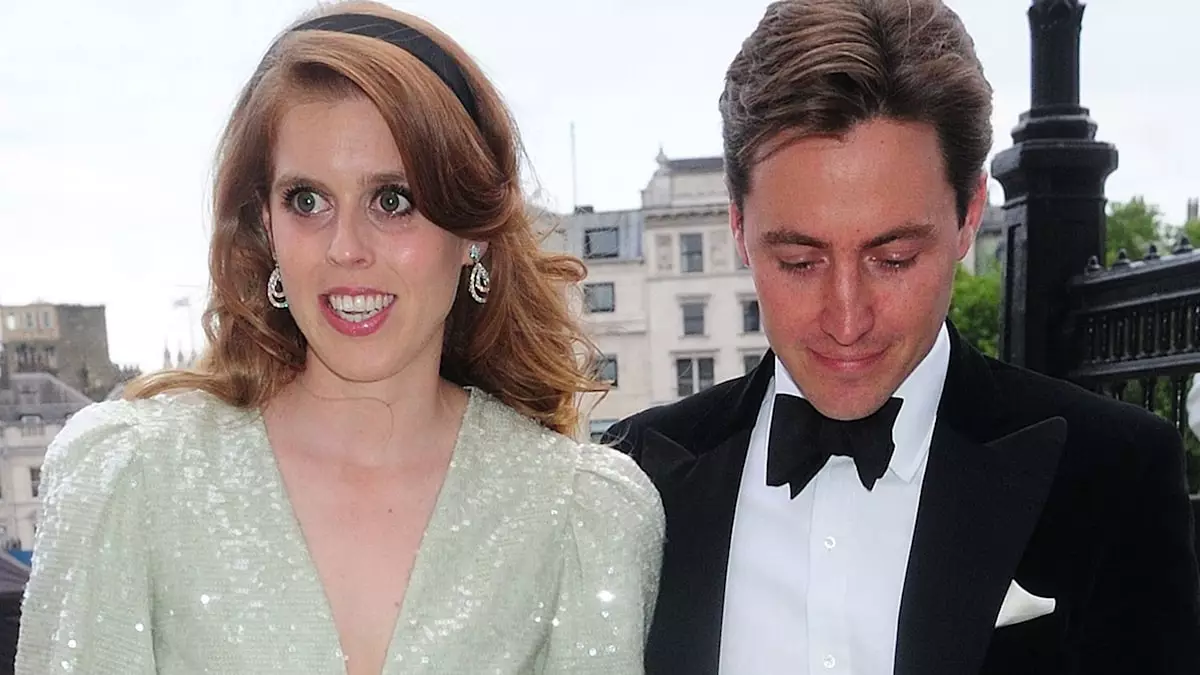Edoardo Mapelli Mozzi’s recent jaunt to New York City without his wife, Princess Beatrice, sheds light on a dynamic that exists within royal families—one that balances personal ambitions with familial obligations. When one half of a couple in the public eye mingles with the hustle and bustle of Manhattan, intrigue follows. Edoardo’s shared moments on social media, like his inspiring sunrise photo of the Brooklyn Bridge, signify not just his appreciation for the city, but also an individual’s pursuit of professional dreams while separated from loved ones.
Such journeys often come with the weight of expectation, especially when one partner remains rooted, attending to pressing matters back home, like Princess Beatrice’s upcoming visit to a cancer unit supported by the Teenage Cancer Trust. The contrast between a bustling New York cityscape and the solemn circumstances that Beatrice faces at home speaks volumes about the responsibilities borne by the royal family.
Confronting Cancer: A Royal Family’s Mission
The Teenage Cancer Trust initiative highlights an essential yet often overlooked issue—the distinct experiences of teenagers and young adults battling cancer. Princess Beatrice’s commitment to this cause, along with the support of her mother, Sarah Ferguson, and sister, Eugenie, encapsulates a family united in the face of adversity. Their visit to the cancer unit stands as a testament to their strength and resilience while advocating for others who navigate the treacherous waters of health crises.
Sarah Ferguson, as a patron of the Teenage Cancer Trust, brings personal experience to the forefront, making her advocacy not just about representation but about fostering genuine change. Her heartfelt message, emphasizing the need for an age-appropriate health care system for young people, calls society to rethink existing health policies. It invokes a pressing question: why have teenagers historically been marginalized in healthcare discussions? Acknowledging the trauma they face without age-specific support underscores a systemic issue needing urgent attention.
The poignancy of Sarah’s insistence on age-appropriate treatment sheds light on the larger societal pressures that can render young people voiceless during critical health crises. This evokes the notion of empathy in advocacy—something lacking in many healthcare systems. By confronting these issues head-on, the royal family doesn’t just offer their voices; they amplify the narratives of countless young individuals who feel overlooked.
The Strength of Unity in Vulnerability
In times of personal struggle, the strength found in familial bonds can be a profound source of healing. Sarah Ferguson reflects on the unwavering support her daughters provide, referring to them affectionately as “The Tripod,” symbolizing the stability they lend each other amid life’s uncertainties. This imagery resonates widely—many can relate to finding strength in family networks during dire times.
Navigating the complexities of cancer, as revealed in Sarah’s journey through two diagnoses—breast cancer and malignant melanoma—demonstrates the painful realities individuals face. Yet, within this daunting narrative lies a story of resolve and the importance of relationships in recovery. The solidarity shown by Princess Beatrice and Eugenie not only speaks to familial loyalty but highlights how vulnerability can forge deep connections, providing an anchor through turbulent times.
Moreover, as pivotal players in the campaign for improved cancer care for teenagers, the royal daughters embody a pivotal transformation in how we view modern royalty. They turn traditional expectations of royal obligation on their heads, opting for an approach that prioritizes social issues and emotional wellbeing. Their humanitarian commitment leads us to recognize the necessity of advocacy groups and healthcare reformers who can assist in gathering momentum for change.
Championing Causes Beyond the Palace Walls
The deliberate alignment of Princess Beatrice and her family with the Teenage Cancer Trust’s mission reflects a modern approach to royal duties. It transcends mere appearances or superficial engagements, actively campaigning for actionable changes in health care policies. What’s particularly inspiring is that they utilize their platform not only to support their mother but to advocate for youth marginalized by the healthcare system.
As they prepare to send an open letter to the health secretary, requesting that teenagers receive the care they so urgently need, the royal family lights a beacon of hope for many. It serves as a reminder that advocacy can emerge from personal journeys, and that the royal family’s narrative can resonate with the contemporary challenges faced by society. The collective push for systemic change comes from a place of empathy and understanding of the harsh realities many young individuals face as they tackle age-inappropriate care.
Edoardo’s trip to New York, juxtaposed against his family’s tireless efforts, paints a vivid picture of life within modern royalty—one characterized by challenges, love, and an unwavering commitment to catalyze positive social change.

